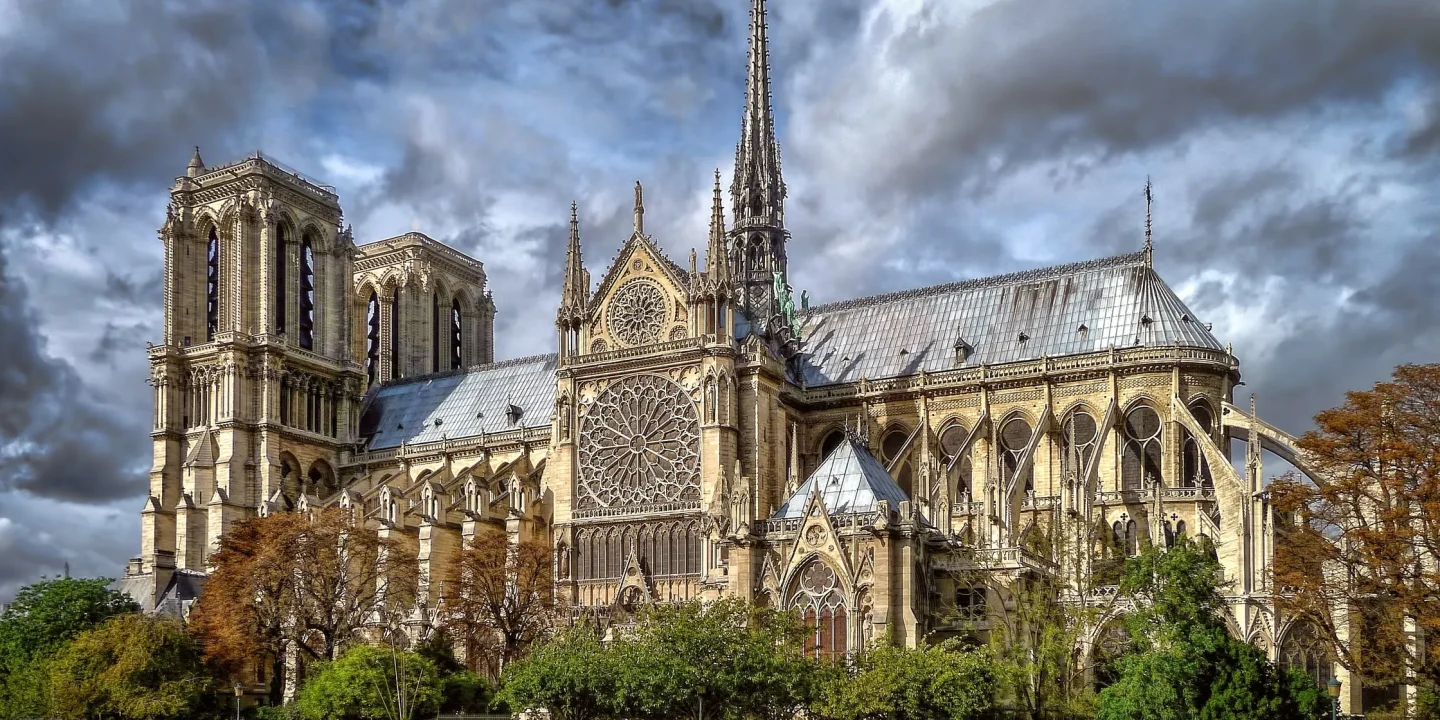
On a crisp December morning, the bells of Notre-Dame de Paris rang out once again, signaling its much-anticipated reopening. After years of painstaking restoration following the devastating fire of April 2019, this iconic cathedral stands as a testament to human determination and the enduring power of history.
A Storied Past
Notre-Dame Cathedral, with its soaring Gothic architecture and breathtaking stained-glass windows, has been a cornerstone of French culture and history for centuries. Commissioned in 1163 and completed in 1345, it took nearly two centuries to perfect its intricate designs. The cathedral’s twin towers, flying buttresses, and gargoyles have captivated millions, symbolizing the grandeur of the medieval era.
New altar (front) designed by French artist and designer Guillaume Bardet, at the Notre-Dame de Paris Cathedral, in Paris on November 29, 2024.
Beyond its architectural splendor, Notre-Dame has been the stage for countless historical events. It hosted the coronation of Napoleon Bonaparte in 1804, a moment immortalized in Jacques-Louis David’s painting. It also witnessed the liberation of Paris in 1944, when its bells rang out in triumph. Victor Hugo’s classic novel, The Hunchback of Notre-Dame, published in 1831, further cemented its place in the cultural imagination, highlighting its mystical allure and the plight of preserving history.
Trials Through Time
Over its long history, Notre-Dame has faced periods of neglect and destruction. During the French Revolution, the cathedral was desecrated, its religious icons destroyed or looted. It served as a warehouse before its eventual restoration in the 19th century under the guidance of architect Eugène Viollet-le-Duc, who added the iconic spire that would tragically collapse in the 2019 fire.
The fire was a moment of collective mourning, with the world watching in disbelief as flames consumed centuries of art, history, and architecture. Yet, it was also a rallying point. Within days, pledges of over €1 billion poured in for its reconstruction, signaling a universal recognition of Notre-Dame’s significance.
The Restoration Journey
Restoring Notre-Dame was no small feat. The project involved hundreds of experts, from architects and archaeologists to artisans specializing in medieval techniques. Each stone and beam was meticulously analyzed and preserved whenever possible. The spire, once a symbol of resilience added in the 19th century, was reconstructed using oak wood and lead, staying faithful to Viollet-le-Duc’s vision.
One of the most challenging aspects was preserving the cathedral’s famed rose windows. These 13th-century masterpieces, miraculously spared by the fire, required delicate cleaning and reinforcement to ensure their brilliance for future generations.
The reopening of Notre-Dame is not just a moment for France but for the world. It underscores the value of heritage and the collective effort required to safeguard it. In an age when modernity often overshadows tradition, the cathedral’s rebirth serves as a reminder of the enduring relevance of history.
Why Notre-Dame Matters
Notre-Dame is more than a building; it is a living chronicle of humanity’s aspirations, creativity, and resilience. Its Gothic architecture pioneered innovations like ribbed vaults and flying buttresses, influencing countless structures worldwide. The cathedral’s art and artifacts, from statues to tapestries, are treasures that transcend borders.
Its cultural significance is equally profound. Notre-Dame has been a sanctuary for pilgrims, a muse for artists, and a symbol of unity in times of crisis. When its bells toll, they echo the shared history of a people who have weathered revolutions, wars, and fires, emerging stronger each time.
As visitors once again walk through its grand portals, they are not just stepping into a historical monument; they are entering a space where time converges. Here, the past speaks to the present, and the future is built on foundations centuries old.
A Global Symbol
The reopening of Notre-Dame marks the end of one chapter and the beginning of another. It stands not only as a masterpiece of human ingenuity but also as a beacon of hope. In a fractured world, its resilience reminds us of the beauty of collective action and the importance of preserving our shared heritage.
As the sun sets over Paris, casting a golden hue over the Seine and illuminating the cathedral’s intricate façade, Notre-Dame reclaims its place as the heart of the city and a symbol of the indomitable human spirit.














